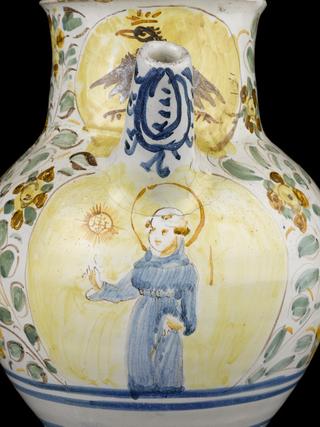

Pharmacy storage jar, French, Hustin factory, 1725-1775, polychrome, faience, used for theriaca by Carmelites
The label on this drug jar reads “THYRIACA”. This is a drug called theriac, a thick sticky liquid medicine (called an electuary) made from up to 64 often strange and exotic ingredients – the flesh of snakes was considered one of the more vital. Originally it was used to treat poisoning and indeed Galen recommended it for the treatment of snake bites. Theriac later became a universal cure for a range of illnesses and diseases and was still in use in the late 1700s.
This jar was made in the Hustin factory of Bordeaux, France, the majority of whose pharmaceutical jars were made for monasteries and hospitals. This jar was used by the Carmelites – nuns or monks of the Roman Catholic Order of Our Lady of Mount Carmel who provided medical care for the poor. Their coat of arms is painted above the label.
Details
- Category:
- Medical Ceramic-ware
- Collection:
- Sir Henry Wellcome's Museum Collection
- Object Number:
- A633656
- Materials:
- earthenware (tin-glazed)
- Measurements:
-
overall: 370 mm x 270 mm x 190 mm, 2.87kg
overall (with lid): 370 mm x 280 mm 190 mm, 2.77 kg
- type:
- storage jar
- credit:
- Loan, Wellcome Trust




